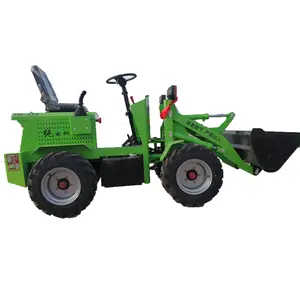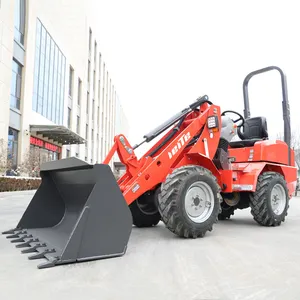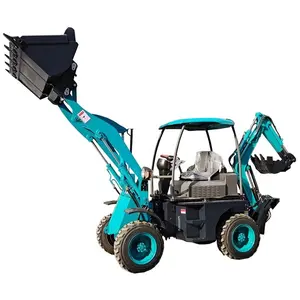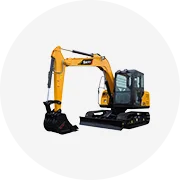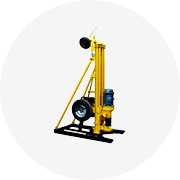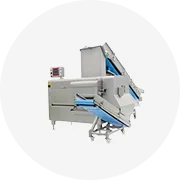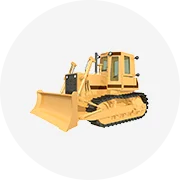Popular na sua indústria
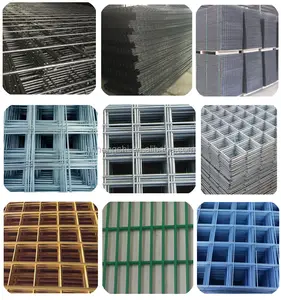











Painéis de fenda de malha soldada 3d, privacidade do jardim ao ar livre
€ 6,51
Pedido Mínimo: 50 Conjuntos

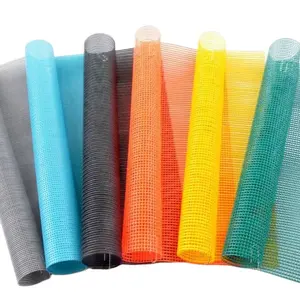
5x5mm145GSM Malha De Fibra De Vidro Resistente A Alcalino Reforço De Fibra De Vidro De Concreto De Malha
Pronto para enviar
€ 0,1673 - € 0,1951
Pedido Mínimo: 10000 Metros quadrados
Envio por peça: € 8,90







High Quality Fiberglass Basalt Fiber Mesh Geogrid with Asphalt Reinforcement
€ 0,7897 - € 1,63
Pedido Mínimo: 1000 Metros quadrados




Coberturas de grade de alto-falante de metal para cercas, treliças e portões decorativos de metal personalizados baratos da China, malha de chapa de metal perfurada
€ 9,76 - € 11,62
Pedido Mínimo: 50 Metros quadrados







Grade de piso de aço resistente/grade circular de aço inoxidável/capa de vala de grade de aço concreto
€ 53,79 - € 69,77
Pedido Mínimo: 10 Peças







3d isopor EPS espuma arame parede painel/EPS espuma 3D painéis
€ 9,28 - € 11,90
Pedido Mínimo: 300 Metros quadrados






Painéis eps de parede de concreto da espuma do fio, venda quente de painéis eps da parede da malha do fio usados na construção para a fábrica
€ 9,53 - € 10,08
Pedido Mínimo: 446 Metros quadrados






Painel de parede 3d de malha de espuma eps, painel de parede 3d de malha de fio de espuma de metal esculpido painel sanduíche
€ 6,34 - € 7,58
Pedido Mínimo: 1 Metro quadrado






Painel 3D EPS Sandwich Wire Mesh usado para telhado e parede
€ 6,32 - € 11,62
Pedido Mínimo: 200 Metros quadrados





50mm 75mm isolado sanduíche do painel do eps para o telhado e a parede do painel do sanduíche do cimento do eps
€ 6,04 - € 7,30
Pedido Mínimo: 300 Metros quadrados
Buscas Relacionadas:
espuma malha arame concretoconcreto arame malha tamanhos9mm malha arame concretomalha arame quadrada concreta4mm malha arame concreto3d painéis eps fio malhaaço grade malha painelpainel espuma malha soldadamalha arame concretoisolamento expandidomalha arame painel epsespuma malha arame concreto4x4 concreto arame malha painéispainéis malha arame concretopainel espuma malha arame






Painéis de isolamento de espuma, painel de malha de fio de sanduíche usado para painéis de tijolos isolados na parede do teto
€ 7,44
Pedido Mínimo: 500 Metros quadrados






Painel de malha de arame 3d eps para armazém com isolamento acústico térmico GMP para sala limpa
€ 5,57 - € 6,50
Pedido Mínimo: 2 Metros quadrados






Painel De Parede De Arame De Malha De Isopor EPS 3D para Construção De Parede De Construção De Parede
€ 9,28 - € 11,90
Pedido Mínimo: 300 Metros quadrados






Painel galvanizado de malha de arame 3D painel de espuma EPS de instalação rápida
€ 9,28 - € 11,90
Pedido Mínimo: 300 Metros quadrados






Painel de parede 3D de malha de arame de espuma EPS de isopor/Painéis 3D de espuma EPS
€ 9,28 - € 11,90
Pedido Mínimo: 300 Metros quadrados






Painel de parede de fio da espuma do eps do estilizador 3d do preço baixo 90mm da parede do fio da espuma para ing
€ 10.218,98 - € 11.147,98
Pedido Mínimo: 1 Conjunto












Máquina de painel de parede de concreto eps, painel de parede 3d para decoração de casa, painéis de parede 3d leves
€ 83.609,82 - € 139.349,70
Pedido Mínimo: 1 Conjunto






Painéis de malha de arame soldados galvanizados 2x2 para reforço da construção de painéis de malha de arame
€ 18,40 - € 21,19
Pedido Mínimo: 500 Peças






Dingzhou Cinco Estrelas Metais 6x6 10/10 6 gauge concreto reforçado ferro soldado malha de arame cerca telhado segurança malha preço
€ 13,85 - € 14,87
Pedido Mínimo: 100 Rolos






Canmax Fabricante Best Selling 3D Ep Wire Mesh Painel De Parede De Concreto Que Faz A Máquina
€ 3.398,28
Pedido Mínimo: 1 Conjunto






Painel 3D de malha de arame galvanizado leve 2*2 painel de espuma para parede de construção
€ 9,28 - € 11,90
Pedido Mínimo: 300 Metros quadrados






Painel de malha de fio soldado galvanizado material de construção personalizado weijia
€ 1,40 - € 20,44
Pedido Mínimo: 100 Metros quadrados






Painel de malha de arame soldado galvanizado de calibre pesado painel de malha de arame soldado de reforço de aço
€ 18,40 - € 21,19
Pedido Mínimo: 500 Peças






Hede Eps Wire Mesh 3d parede painel que faz a máquina 3d isopor eps espuma malha fio parede painel máquina
€ 83.609,82 - € 139.349,70
Pedido Mínimo: 1 Conjunto






Leve Eps Espuma 3D Telhado Sandwich Wire Mesh Painel Placa Placa Moldagem Máquina Planta
€ 10.683,48 - € 11.147,98
Pedido Mínimo: 1 Conjunto






Painel de parede leve galvanizado de malha de arame de isopor 3D EPS
€ 9,28 - € 11,90
Pedido Mínimo: 300 Metros quadrados






Painel De Espuma De Malha De Arame Soldado Sanduíche EPS 3D Leve Isolado
€ 9,28 - € 11,90
Pedido Mínimo: 300 Metros quadrados






Painel de malha de fio soldado, 6x6 4x4 2x2 preto decorativo reforço de concreto
€ 6,51 - € 7,25
Pedido Mínimo: 100 Rolos






2x2 gado galvanizado arame soldado malha painel 8x4 galvanizado reforço concreto vergalhão soldado arame malha painel
€ 7,44 - € 13,94
Pedido Mínimo: 10 Peças






Máquina de solda automática de painel de malha de arame para parede sanduíche de concreto 3D eps usada em construção civil de espuma de alta qualidade personalizada
€ 92.714,01 - € 139.163,91
Pedido Mínimo: 1 Conjunto






Máquina para fazer painéis de parede 3D de concreto pré-moldado EPS leve
€ 18.579,96 - € 37.159,92
Pedido Mínimo: 1 Conjunto




Máquina de soldar painel de malha de arame para parede 3d totalmente automática, preço bom e vendas quentes
€ 9.289,98
Pedido Mínimo: 1 Conjunto






EPS 3d Wire Mesh espuma parede painéis para construção parede Material
€ 9,28 - € 11,90
Pedido Mínimo: 300 Metros quadrados
Principais categorias
Sobre concreto fio malha espuma painel
Sua busca por alta qualidade e adeptos. concreto fio malha espuma painel termina com a linha de produtos em Alibaba.com. Oferecidas pelos fornecedores líderes e importantes, as categorias de concreto fio malha espuma painel no site certamente chamarão sua atenção logo na primeira vez. Dê uma olhada em alguns dos mais proficientes. concreto fio malha espuma painel e decida sobre as melhores para todas as suas necessidades.
concreto fio malha espuma painel são uma das peças mais essenciais para qualquer unidade de fabricação ou construção e, portanto, a coisa mais importante de que você precisa cuidar é a qualidade e o desempenho do. concreto fio malha espuma painel. Quer pretenda comprar um novo ou mesmo um usado, se os parâmetros de desempenho e a qualidade destes produtos não forem verificados, pode ter resultados desastrosos. Aqui esse aspecto é cuidado, e uma seleção brilhante de. concreto fio malha espuma painel são apresentados. Basta verificar as descrições e obter aquela que é suficiente para você.
Uma variedade distinta de. concreto fio malha espuma painel estão disponíveis em Alibaba.com desde celular. concreto fio malha espuma painel para os fixos. Você também pode escolher outras opções, como bombas de alta pressão, bombas injetoras, de reboque, bombas misturadoras, miniversões e muito mais. Estes. concreto fio malha espuma painel são facilmente transportáveis e podem vir com características exclusivas funcionando a diesel. Existem diferentes variantes de peso e categorias de modelo para escolher, dependendo de seus requisitos.
Por que continuar despejando todo o seu dinheiro quando você tem tanto. concreto fio malha espuma painel disponível em Alibaba.com? Verifique-os agora e escolha aquele que se adapta às suas necessidades e finanças.
Uma variedade distinta de. concreto fio malha espuma painel estão disponíveis em Alibaba.com desde celular. concreto fio malha espuma painel para os fixos. Você também pode escolher outras opções, como bombas de alta pressão, bombas injetoras, de reboque, bombas misturadoras, miniversões e muito mais. Estes. concreto fio malha espuma painel são facilmente transportáveis e podem vir com características exclusivas funcionando a diesel. Existem diferentes variantes de peso e categorias de modelo para escolher, dependendo de seus requisitos.
Por que continuar despejando todo o seu dinheiro quando você tem tanto. concreto fio malha espuma painel disponível em Alibaba.com? Verifique-os agora e escolha aquele que se adapta às suas necessidades e finanças.


